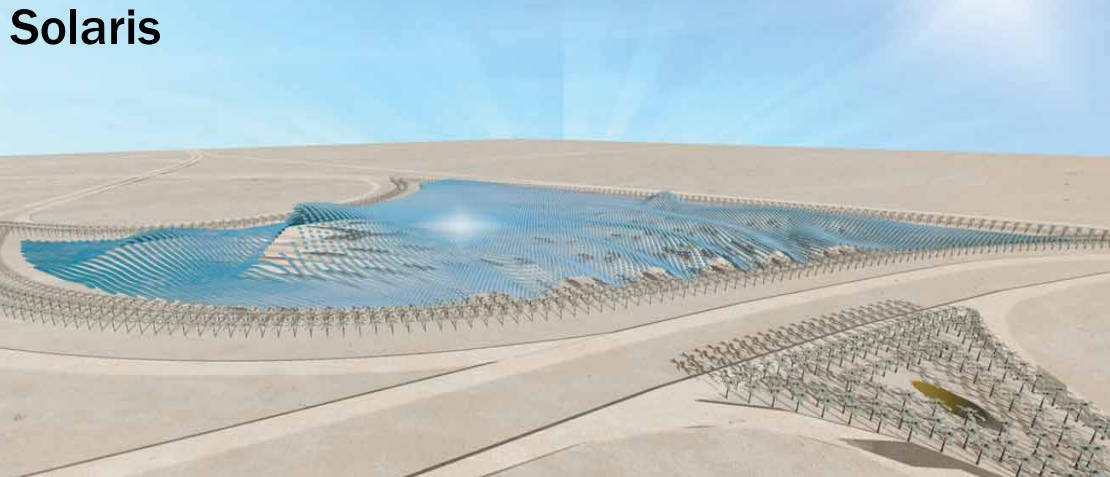Drawing on the inspiration of the Bedouin tent of the Arabian Peninsula, architectural firm Predock Frane has designed Solaris, a solar canopy that drapes a massive area and acts both as a landscape and structure.

Click to Enlarge
The structure is entered through a tunnel passage. To make energy generation possible, intelligent solar "balloons" mounted on a light sensitive tissue form a veil that tracks the sun, adjusting to capture solar energy.

Click to Enlarge
The ballons use high-concentration solar modules from the company Cool Earth. Thanks to its 25,000 solar cells, the canopy can produce an annual average of 73,000 megawatt hours.

Click to Enlarge
This creation was a prize winner in the Land Art Generator competition, as was the design featured in the post Wind Energy Without Propellers.



Comments
this is an awesome concept, but for this flexible solar panels will required and they are too costly nower days but now i can say our future is much more Green, Clean and Bright.... :)
Hi, Krunal--thanks for your comment. I'm not sure the cells themselves need to be flexible. I think just the material that holds them together is flexible. Of course, you can download a PDF of the full submission from the architects here for more info: <a href="http://landartgenerator.org/blagi/wp-content/uploads/2010/08/Solaris.pdf" rel="nofollow">http://landartgenerator.org/blagi/wp-content/uplo...</a>. Also, see <a href="http://www.coolearth.com" rel="nofollow">www.coolearth.com</a> for info on the solar tech behind it. With all that said, this was obviously for a competition and never built, so you may well be right about its technical constraints! Thanks again for the comment, and keep reading ChEnected!
Is this supposed to be 73,000 MW (annual average) as the article states or 73,000 MW-hr/year? I think there may have been a 4 orders-of-magnitude error in transcribing from the Land Art Generator site. In any case, could you fix the headline so it shows average power or energy per unit time but not "MW Annually"?
Eric, thanks for catching that. (I revised title/text--better?) Initially, I took info from the architects' submission boards (which can be downloaded here: http://landartgenerator.org/blagi/wp-content/uploads/2010/08/Solaris.pdf) but they clearly made a mistake, which I took for accurate. I see that the blog post on the site about the submission does actually state it correctly. Thanks again the the catch!
I feel that this idea is not quite practical nor feasible. We are talking about making a material that is cost effective and will capture that much energy per year. However, what technologies exist that will enable this device to be manufactured at a low cost with the ability to capture this much energy? It is quite an innovative concept, yet is it practical? In my opinion, it is not. Is it cheap? Again, in my opinion, I believe that this design will require a large investment into a high cost material used to build it. In order for this to be practical and also feasible, I feel there needs to be a better description on the estimated costs per gain on this d evice, and then it would be much better to evaluate its practicality. As far as I can see, this device will require a significant amount of money to build but the yeild will not pay off the investment it seems like. However, overall it is a very ingenious idea.
Eric, thanks for the comment. Yes, I agree it looks as though it would be too expensive to be feasible for most sites. Perhaps it would be a possibility for the big budgets of Abu Dhabi, for which it was designed. I think outlandish projects—though often clever and beautiful—are the norm for a lot of competitions like this, since most are never built. Nonetheless, I guess a design like this can help spark ideas for other, more practical architects and engineers.